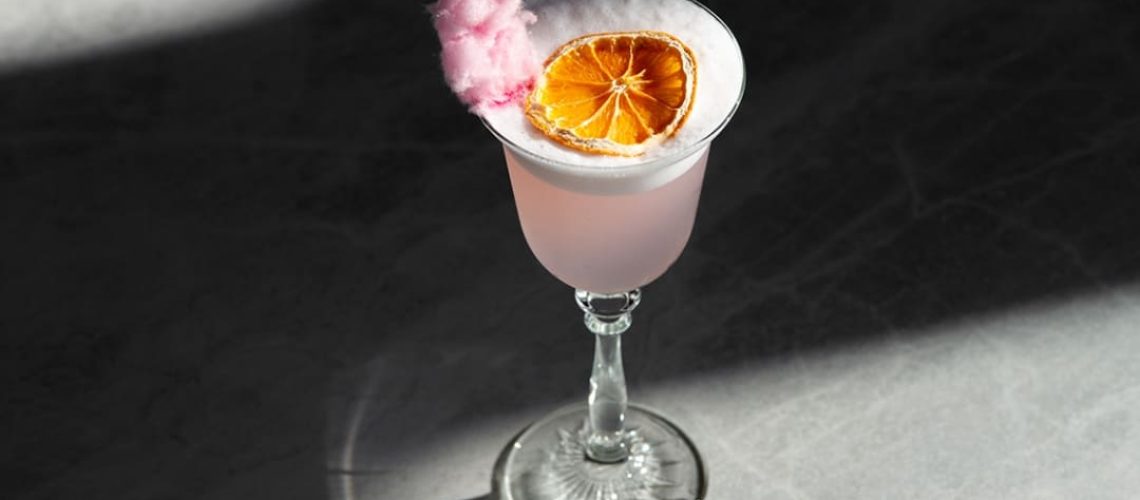Who says sustainability is limited to food? The zero waste drinks movement is gaining global momentum, with bartenders becoming increasingly environmentally conscious, and implementing various changes to reduce their waste footprint.
Thirst Co-founder Clyde Ackerman, says the trend has swept across the industry and gets its inspiration from the culinary world’s nose-to-tail zero waste cooking approach. In mixology, the idea is to use herbs, fruit, flowers and vegetables from root to tip and develop cocktails focused on using every single part of an ingredient in the most efficient way possible.
“There’s so much that goes to waste behind a bar without even realizing. From disposables including straws, coasters and serviettes, to fruit scraps and water, it all adds up.”
Since we’re all spending significantly more time at home, think about how you can make your own amateur mixology habits and home-bar more sustainable. Thirst outlines 5 essential tips to making your home bar and at-home cocktails more sustainable:
1.Ditch the plastic
From straws to coasters to swizzle sticks, ditching single-use plastics is the first critical step in becoming a more sustainable drinker. Instead, opt for a reusable metal straw or recyclable paper straws and other sustainable, biodegradable and reusable drinking materials.
2.Focus on fresh & seasonal
Aim to use mainly fresh ingredients that are local and in season. Do your homework and research what locally made ingredients are in season and only make cocktails that highlight those ingredients.
3.All dried up
When it comes to making a sustainable drink, dehydrate everything. Not only does dehydrating ingredients reduce waste, but it drastically increases the shelf-life of a garnish. Plus it greatly enhances a drink’s visual appeal.
4.Reuse, repurpose & reinvent
Adopt a zero-waste approach. By getting the most from your ingredients, you can create syrups, garnishes and juices in a cost-effective way. Reuse raw scraps of fruit and vegetable clippings,shells, peels and convert them into syrups and garnishes. Lemon and lime husks can be used for rind, or can be candied, pickled or repurposed into syrup, while leftover herbs can be wilted and served as cocktail garnishes. Get creative and create a festive atmosphere by using an empty pineapple or coconut instead of a glass.
5.Grow it
Many classic cocktail garnishes are common garden ingredients like mint, basil and rosemary. Grow your own garnishes on your doorstep. Plus, it’s free!
Sustainable Whisky Sour Cocktail Recipe
Citrus is one of the most commonly used ingredients in a bar. In most cases, the zest and juices will be used, leaving the husks to be discarded. Thirst will show you how you can use the entire citrus fruit focusing on lemons in particular.
The idea of sustainability is to minimize what gets discarded reducing the carbon footprint. This also helps with being able to get more out of your products which will save on costs as well.
What you’ll need:
- 50ml scotch whisky
- 25ml freshly squeezed lemon juice
20ml chickpea brine (from a tin of chickpeas). Roast the leftover chickpeas adding spices and serving them as a snack to accompany the whisky sours. - 2 Dashes Angostura Bitters
- 12,5ml Sugar syrup
Method: Shake and Strain
Add all the ingredients to a mixing glass and close with a shaker. Dry shake (without ice) first then add cubed ice to the shaker and shake again. This helps the chickpea brine to emulsify the drink producing a smooth silky texture. Single strain into a rocks glass over cubed ice. Garnish: Lemon Zest
Repurposing the Lemon:
Start off by zesting (peeling) the lemon. Try to avoid getting any of the white pith on the zest as this will give off a bitter taste. The zest is used as a garnish for the cocktail or can go on to be infused into a spirit.
Proceed to juice the lemons using a citrus juicer. The juice will be used in the cocktails, or used to make lemon cordial. You should then be left with squeezed husks. These can be added to a jar to make an Oleo Saccharum syrup or used to make a lemon cordial. Once used for cordial you will be left with some very sugary lemon husks. These are still usable and can now be cooked up with some butter to make a homemade lemon curd.
Good Luck and Enjoy!

